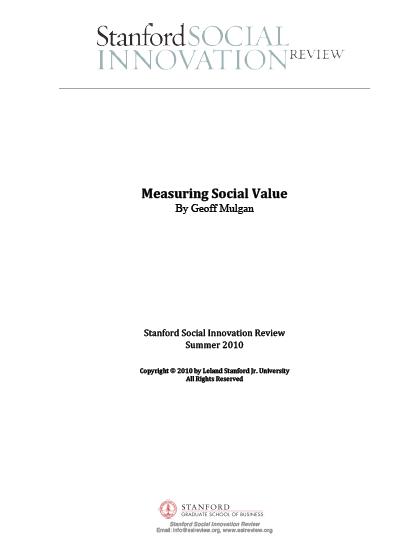Funders, nonprofit executives, and policymakers are very enthusiastic about measuring social value. Alas, they cannot agree on what it is, let alone how to assess it. Their main obstacle is assuming that social value is objective, fixed, and stable. When people approach social value as subjective, malleable, and variable, they create better metrics to capture it.
Over the last few decades, many people have attempted to measure what is sometimes called social, public, or civic value—that is, the value that nongovernmental organizations (NGOs), social enterprises, social ventures, and social programs create.1 The demand for these metrics has come from all sectors: Foundations want to direct their grants to the most effective programs; public officials, policymakers, and government budget offices have to account for their spending decisions; investors want hard data analogous to measures of profit; and nonprofits need to demonstrate their impact to funders, partners, and beneficiaries. Metrics to meet these needs have proliferated over the last 40 years, resulting in hundreds of competing methods for calculating social value.
Despite the enthusiasm for metrics, few people actually use them to guide decisions. In the nonprofit sector, good managers are very rigorous about tracking costs and income. But few use sophisticated metrics to help allocate resources. Meanwhile, in the public sector, political judgment counts more than cost-benefit assessments. In the rare cases when decision makers do use metrics of social value, it’s far from clear that they should.





